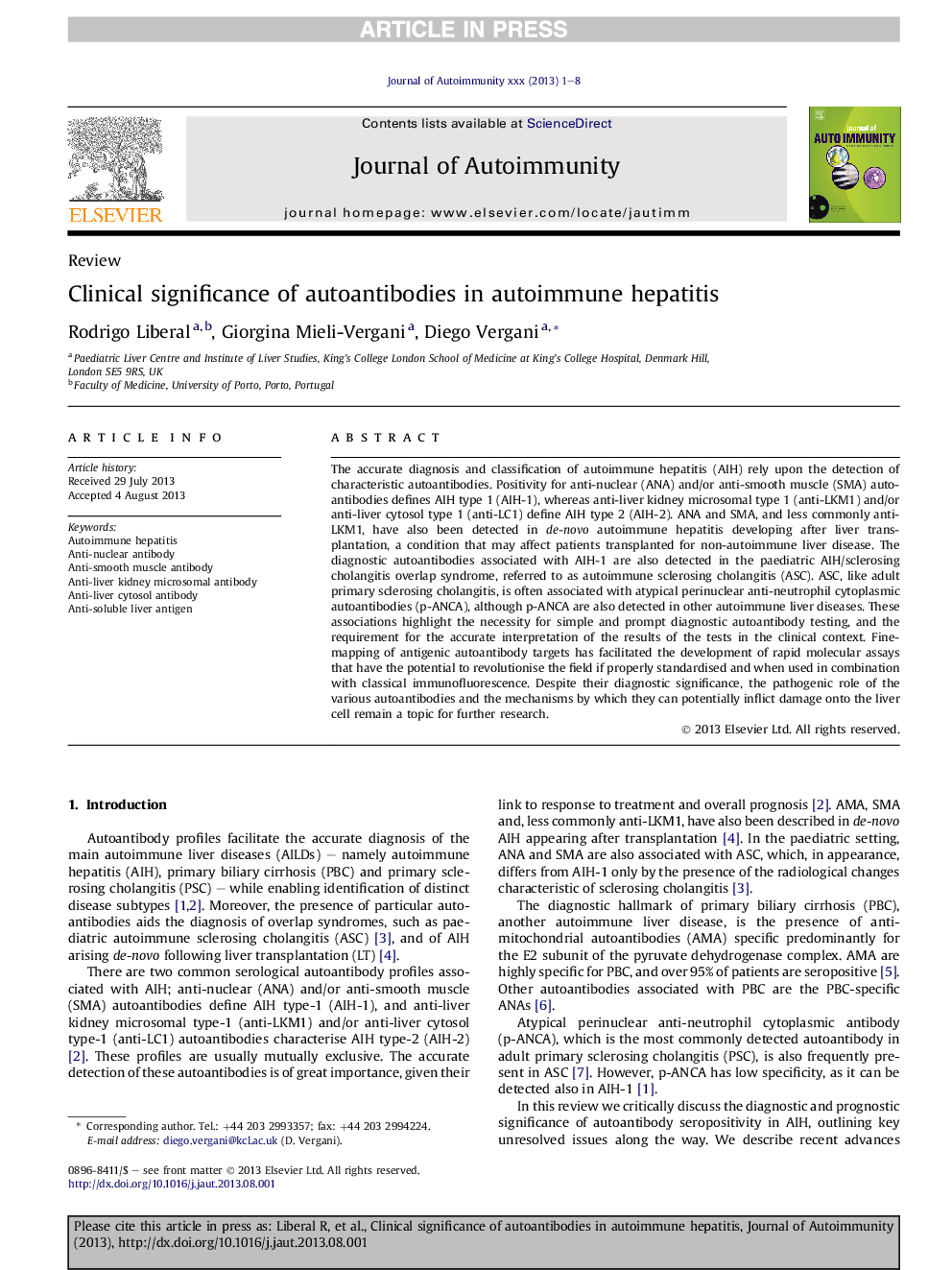| Article ID | Journal | Published Year | Pages | File Type |
|---|---|---|---|---|
| 6119302 | Journal of Autoimmunity | 2013 | 8 Pages |
Abstract
The accurate diagnosis and classification of autoimmune hepatitis (AIH) rely upon the detection of characteristic autoantibodies. Positivity for anti-nuclear (ANA) and/or anti-smooth muscle (SMA) autoantibodies defines AIH type 1 (AIH-1), whereas anti-liver kidney microsomal type 1 (anti-LKM1) and/or anti-liver cytosol type 1 (anti-LC1) define AIH type 2 (AIH-2). ANA and SMA, and less commonly anti-LKM1, have also been detected in de-novo autoimmune hepatitis developing after liver transplantation, a condition that may affect patients transplanted for non-autoimmune liver disease. The diagnostic autoantibodies associated with AIH-1 are also detected in the paediatric AIH/sclerosing cholangitis overlap syndrome, referred to as autoimmune sclerosing cholangitis (ASC). ASC, like adult primary sclerosing cholangitis, is often associated with atypical perinuclear anti-neutrophil cytoplasmic autoantibodies (p-ANCA), although p-ANCA are also detected in other autoimmune liver diseases. These associations highlight the necessity for simple and prompt diagnostic autoantibody testing, and the requirement for the accurate interpretation of the results of the tests in the clinical context. Fine-mapping of antigenic autoantibody targets has facilitated the development of rapid molecular assays that have the potential to revolutionise the field if properly standardised and when used in combination with classical immunofluorescence. Despite their diagnostic significance, the pathogenic role of the various autoantibodies and the mechanisms by which they can potentially inflict damage onto the liver cell remain a topic for further research.
Related Topics
Life Sciences
Immunology and Microbiology
Immunology
Authors
Rodrigo Liberal, Giorgina Mieli-Vergani, Diego Vergani,
